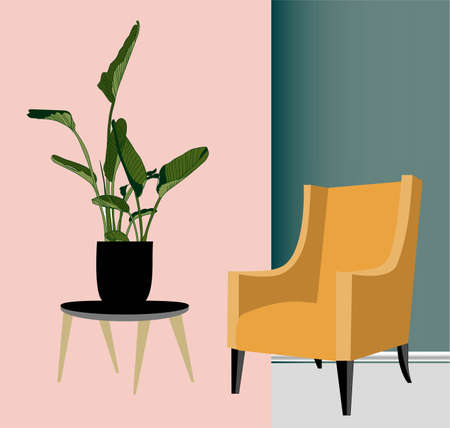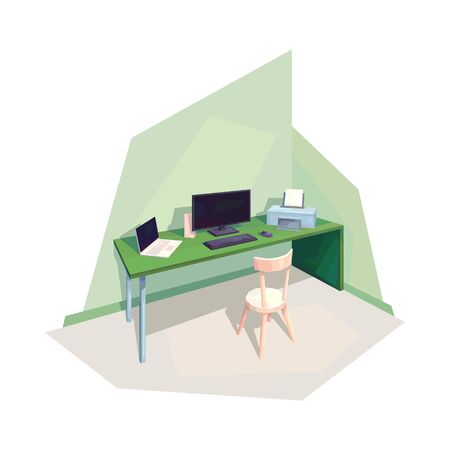Understanding Rental Restrictions in the UK
When it comes to decorating rented accommodation in the UK, tenants often find themselves navigating a maze of restrictions and rules. Unlike homeowners, renters must work within the boundaries set by their tenancy agreements, which can be surprisingly strict about what you can and cannot do to personalise your space. Most landlords prefer to keep properties in a neutral, universally appealing condition to make it easier to re-let once tenants move out. This means bold paint colours or wallpaper are often discouraged, if not outright forbidden. Many tenancy contracts specifically prohibit painting walls or making any permanent alterations without prior written approval from the landlord. Even putting up shelves or hooks can sometimes require permission. The fear of losing a deposit also looms large, as any unauthorised changes might be deducted from it at the end of your stay. These limitations can feel stifling, especially when youre keen to create a home that supports your wellbeing through colour and personal touches. However, understanding these boundaries is the first step towards finding flexible, creative strategies for making your rental feel like your own—without falling foul of the rules.
2. The Psychology of Colour and Wellbeing
Understanding the impact of colour on mood and wellbeing is essential, especially when personalising a rented home in the UK where permanent changes may not be allowed. Colour psychology is deeply rooted in both science and culture, influencing how we feel and interact with our surroundings. British research, such as studies conducted by the University of Sussex and the Mental Health Foundation, consistently highlight that certain hues can either uplift or dampen our spirits.
How Colours Affect Mood: Insights from the UK
In the UK, muted tones like soft blues and greens are particularly popular in rental spaces for their calming effects. These shades evoke the tranquillity of British countryside landscapes and coastal settings, which many find grounding in urban environments. Warm neutrals and pastel yellows are commonly chosen to brighten north-facing rooms, reflecting the limited sunlight typical of British weather while promoting a sense of warmth and optimism.
Common Colour Choices and Their Psychological Effects
| Colour | Psychological Impact | UK Examples |
|---|---|---|
| Blue | Calm, focus, serenity | Used in NHS waiting rooms to reduce anxiety |
| Green | Restful, balancing, fresh | Inspired by British gardens and parks; often seen in living rooms |
| Yellow | Energising, cheerful, warm | Popular in kitchens and entryways to counter grey weather |
| Grey | Neutral, modern, understated | A staple in many London flats for a sophisticated look |
| Purple/Lilac | Sophisticated, soothing, creative | Found in bedrooms or reading nooks for a touch of luxury |
The Importance of Flexibility in Rentals
Many landlords in the UK prefer neutral walls to maximise appeal for future tenants. Therefore, renters often turn to flexible solutions such as removable wallpaper, colourful textiles or decorative accessories to introduce positive colour influences without risking their deposit. For instance, a study by Dulux in collaboration with Shelter found that 68% of UK renters feel more at home after adding their own touches with colour through cushions, throws or temporary wall art.
Ultimately, choosing colours thoughtfully—while respecting tenancy agreements—can transform a rented accommodation into a nurturing sanctuary that supports emotional health and everyday comfort.

3. Temporary and Damage-Free Colour Solutions
Transforming your rented flat or house in the UK doesn’t have to mean risking your deposit or breaking tenancy rules. There’s a world of temporary, damage-free decorating options that let you inject personality and colour into your home while keeping things landlord-friendly. The secret lies in clever, removable solutions that are both stylish and practical—perfect for renters who crave change or want to boost their sense of wellbeing.
Peel-and-Stick Wallpaper
If you’re longing for a feature wall or a splash of pattern, peel-and-stick wallpaper is a game changer. Easy to apply and remove, it comes in a huge range of colours and designs, from classic botanicals to bold geometrics. When it’s time to move out, just peel it away—no sticky residue, no fuss. It’s ideal for accent walls in living rooms or bedrooms, instantly making the space feel more ‘you’ without any commitment.
Command Hooks and Strips
For British renters wary of putting holes in the wall, Command hooks and strips are an absolute essential. These handy fixings let you hang everything from fairy lights and bunting to framed art and mirrors, all without nails or screws. They’re perfect for creating gallery walls or changing up your décor with the seasons—just remove them when you leave, and your walls remain pristine.
Layered Textiles
Soft furnishings are perhaps the quickest way to add warmth and colour to a rented space. Think vibrant throws draped over neutral sofas, colourful cushions on beds, or even a statement rug anchoring your living area. In the often unpredictable British weather, these layers also bring extra comfort and cosiness—a must for those grey winter days.
Large Art Prints & Posters
If painting isn’t allowed but blank walls are driving you mad, oversized art prints or posters are a renter’s best friend. Pop them in lightweight frames (hung with Command strips), lean them against walls atop mantels or sideboards, or use poster hangers for a Scandi-inspired look. Choose uplifting images or calming landscapes to enhance your wellbeing every time you walk through the door.
Mix & Match Your Approach
The beauty of these temporary solutions is how easily they can be switched up as your mood—or even the season—changes. Whether you love bold hues or prefer soft pastels, there’s a removable option to suit every taste and tenancy agreement. With a bit of creativity and some clever shopping, you can make your rented accommodation truly feel like home—without leaving a trace behind.
4. Seasonal Updates for Personal Comfort
Living in a rented home in the UK often means working with neutral backdrops and fixed decor, but you can still create a cosy, inviting atmosphere that evolves with the seasons. British weather is famously unpredictable—one day its chilly and grey, the next its bright and breezy—so adapting your space for comfort is both practical and uplifting. Here are some low-commitment, cost-effective ways to update your rental through the year, all without risking your deposit.
Soft Furnishings: Quick Transformations
Cushions, throws, and rugs are staples of the British home, providing warmth in winter and freshness in summer. Swapping these out as the seasons change instantly refreshes your space. For example, deep velvets or chunky knits suit autumn and winter, while light linens or cottons bring a crisp touch for spring and summer. Choose colours that reflect the season—think mustard and burgundy for autumn, soft pastels for spring.
Seasonal Accessories: Small Touches, Big Impact
Accessories like candles, vases, or even lampshades can be rotated to match the mood outside your window. In autumn, opt for earthy ceramics or brass accents; in summer, try glass or woven baskets. Even something as simple as changing artwork prints or adding fresh flowers from the market (or local park) can boost your wellbeing through subtle shifts in colour and texture.
Typical British Weather & Lifestyle Considerations
| Season | Weather Traits | Recommended Accessories | Colour Suggestions |
|---|---|---|---|
| Spring | Mild, rainy spells | Light throws, pastel cushions, fresh floral prints | Pale green, blush pink, sky blue |
| Summer | Warm(ish), occasional heatwave | Linen tablecloths, airy curtains, woven baskets | Cream, seafoam, sunflower yellow |
| Autumn | Crisp air, early dusk | Knit blankets, scented candles, metallic accents | Ochre, rust, deep teal |
| Winter | Cold, damp, short days | Thick rugs, faux fur throws, fairy lights | Burgundy, forest green, navy |
No-Fuss Storage Solutions for Seasonal Items
A typical UK rental may not have much storage space. Opt for under-bed boxes or vacuum bags to neatly store off-season accessories. This keeps your home clutter-free while making it easy to rotate items when the weather changes—embracing both comfort and practicality in true British fashion.
5. Smart Storage to Maximise Space and Style
If you’re living in a rented flat or house share in the UK, chances are space is at a premium. Yet, with a bit of creative thinking, storage can become both practical and a way to inject colour and personality into your home. Here’s how to blend smart storage solutions with flexible colour strategies that lift both mood and décor.
Multi-Functional Furniture with a Splash of Colour
Opt for ottomans, benches or stools that double up as storage—perfect for stashing away throws, books, or shoes. Choose pieces in bold hues like mustard yellow, deep teal or blush pink to introduce cheerful colour pops. These not only keep clutter at bay but also serve as statement accents, ideal for brightening often neutral rental walls.
Floating Shelves and Open Displays
Floating shelves are a renter’s best friend: easy to install and remove with minimal wall damage. Arrange them above desks, beds, or in awkward corners. Use colourful baskets or painted storage boxes to organise essentials while showcasing your taste. Displaying books by spine colour or adding trailing plants in vivid pots brings both order and visual interest to small spaces.
Under-Bed and Over-Door Solutions
Maximise every inch by using under-bed drawers or rolling storage crates—choose fabric bins in lively prints or hues that complement your bedding. Over-door hooks and organisers offer extra space for coats, bags, or accessories without drilling into the walls—look for designs in fun colours or metallic finishes for an added touch of character.
Personal Touches with Portable Pieces
In the UK, where you might move flats frequently, portable storage like stackable cubes or collapsible trolleys are invaluable. Pick options in coordinating tones to tie your room’s palette together. Not only do they keep your belongings tidy, but they also make it easy to refresh your layout whenever you fancy a change.
By weaving together clever storage ideas and flexible use of colour, you can create a rental home that feels organised, uplifting, and unmistakably yours—no matter how compact the space may be.
6. Communicating with Your Landlord
Navigating the rules around decorating your rented accommodation in the UK can feel daunting, but open and respectful communication with your landlord is key to creating a space that supports your wellbeing. Before making any changes, review your tenancy agreement thoroughly—many UK contracts include specific clauses about decorating, so understanding what’s permitted will put you on solid ground.
When you’re ready to approach your landlord, frame your ideas as improvements that respect the property while enhancing your quality of life. Explain how small, flexible colour strategies—like removable wallpaper, temporary wall stickers, or soft furnishings in calming hues—can boost comfort without causing permanent alteration. Offer to share inspiration boards or samples to reassure them that your choices are tasteful and reversible.
Be Clear and Respectful
Contacting your landlord by email is often best as it provides a written record of your request and their response. Use polite, straightforward language: briefly outline what you’d like to do, why it matters for your wellbeing, and how you plan to return everything to its original state when you leave. Remember to ask for their preferences on paint brands or methods if painting is allowed—landlords may have specific requirements to protect their investment.
Highlight Flexibility
Emphasise that any changes will be temporary and easily reversible, such as using command strips for artwork or opting for peel-and-stick décor. Offer reassurances that all alterations will be professionally restored at the end of your tenancy if needed. This kind of transparency can build trust and demonstrate your commitment to being a responsible tenant.
Keep the Dialogue Open
Finally, always keep the conversation two-way. If your landlord expresses concerns, listen carefully and be prepared to compromise—for example, agreeing on certain colours or materials. Cultivating this mutual respect not only increases your chances of approval but also helps maintain a positive relationship throughout your tenancy. By approaching decorating as a collaborative effort, you can achieve a home environment that nurtures wellbeing while honouring the responsibilities that come with renting in the UK.


